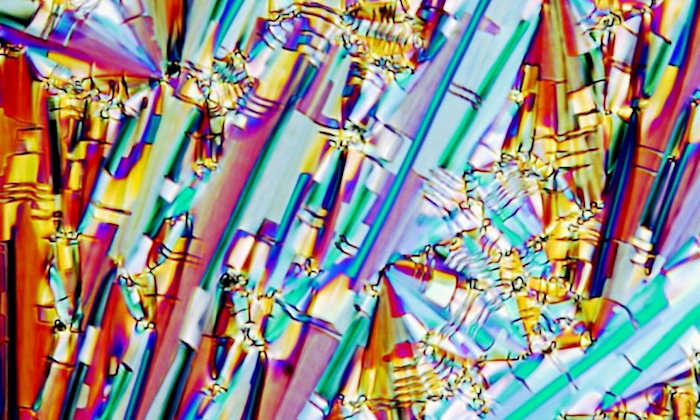Art meets science as Manchester academic creates stunning LCD images
28 Sep 2016
There are now more LCD displays in the world than human beings, and everyone uses them in mobile telephones, laptops, and flat panel TVs - but very few people know how the technology actually works, and fewer still are familiar with the striking colours and patterns that liquid crystals produce in microscopy

In an effort to address this, a Manchester scientist has created artistic pieces which demonstrate the beauty and fascination of liquid crystal textures.
Ingo Dierking, a Senior Lecturer in the School of Physics and Astronomy, shows that liquid crystals exhibit fantastic textures which are works of art in themselves, made by nature, and that looking at them using a polarised microscope gives rise to a fascinating world of colour and structure.
He has captured these observations in stunning images which he has displayed in exhibitions at Valle Crucis Abbey in Wales, Jaca in Spain and various venues throughout his native Germany.
“Liquid crystals are a fascinating form of matter for research and technology, but when viewed at a very small scale, their beauty captures the attention of the scientist and the layman alike - one cannot fail to see the interplay between flow, optics, elasticity and defects,” said Ingo.
Liquid crystal has become a multi-billion dollar industry which is of enormous importance to research and technology, and the University has been a world leader in the field for over 20 years.
Ingo and his team led the way in research into the low power black & white reflective displays used in a swathe of technology across the world today, and has also done pioneering work to look at using LCD and carbon nanotubes to produce electrically and magnetically steered electronic switches, which is at the forefront of worldwide liquid crystal physics research.
The University’s liquid crystal research has also been useful in other areas - for example, it developed a method to locate defects in solar cells using liquid crystals which is now employed by all large solar panel producers.
“Liquid crystal research is a fascinating and truly interdisciplinary area of study, bridging the traditional fields of physics, chemistry, biology and engineering - this makes it such an exciting field to work in. It leads to a range of novel applications, and opens the door to develop an understanding of processes in life itself.”
